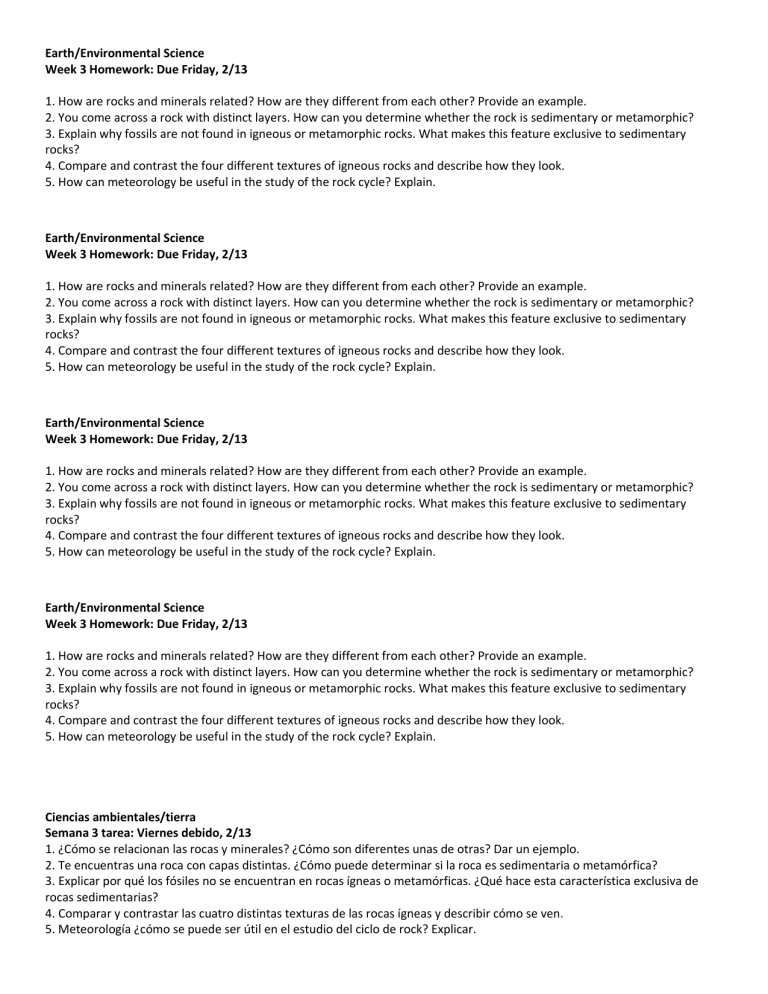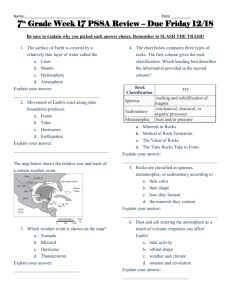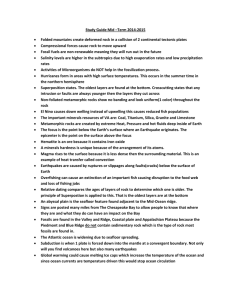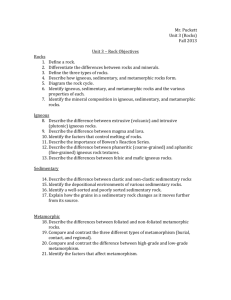Earth/Environmental Science Week 3 Homework: Due Friday, 2/13 1

Earth/Environmental Science
Week 3 Homework: Due Friday, 2/13
1. How are rocks and minerals related? How are they different from each other? Provide an example.
2. You come across a rock with distinct layers. How can you determine whether the rock is sedimentary or metamorphic?
3. Explain why fossils are not found in igneous or metamorphic rocks. What makes this feature exclusive to sedimentary rocks?
4. Compare and contrast the four different textures of igneous rocks and describe how they look.
5. How can meteorology be useful in the study of the rock cycle? Explain.
Earth/Environmental Science
Week 3 Homework: Due Friday, 2/13
1. How are rocks and minerals related? How are they different from each other? Provide an example.
2. You come across a rock with distinct layers. How can you determine whether the rock is sedimentary or metamorphic?
3. Explain why fossils are not found in igneous or metamorphic rocks. What makes this feature exclusive to sedimentary rocks?
4. Compare and contrast the four different textures of igneous rocks and describe how they look.
5. How can meteorology be useful in the study of the rock cycle? Explain.
Earth/Environmental Science
Week 3 Homework: Due Friday, 2/13
1. How are rocks and minerals related? How are they different from each other? Provide an example.
2. You come across a rock with distinct layers. How can you determine whether the rock is sedimentary or metamorphic?
3. Explain why fossils are not found in igneous or metamorphic rocks. What makes this feature exclusive to sedimentary rocks?
4. Compare and contrast the four different textures of igneous rocks and describe how they look.
5. How can meteorology be useful in the study of the rock cycle? Explain.
Earth/Environmental Science
Week 3 Homework: Due Friday, 2/13
1. How are rocks and minerals related? How are they different from each other? Provide an example.
2. You come across a rock with distinct layers. How can you determine whether the rock is sedimentary or metamorphic?
3. Explain why fossils are not found in igneous or metamorphic rocks. What makes this feature exclusive to sedimentary rocks?
4. Compare and contrast the four different textures of igneous rocks and describe how they look.
5. How can meteorology be useful in the study of the rock cycle? Explain.
Ciencias ambientales/tierra
Semana 3 tarea: Viernes debido, 2/13
1. ¿Cómo se relacionan las rocas y minerales? ¿Cómo son diferentes unas de otras? Dar un ejemplo.
2. Te encuentras una roca con capas distintas. ¿Cómo puede determinar si la roca es sedimentaria o metamórfica?
3. Explicar por qué los fósiles no se encuentran en rocas ígneas o metamórficas. ¿Qué hace esta característica exclusiva de rocas sedimentarias?
4. Comparar y contrastar las cuatro distintas texturas de las rocas ígneas y describir cómo se ven.
5. Meteorología ¿cómo se puede ser útil en el estudio del ciclo de rock? Explicar.









